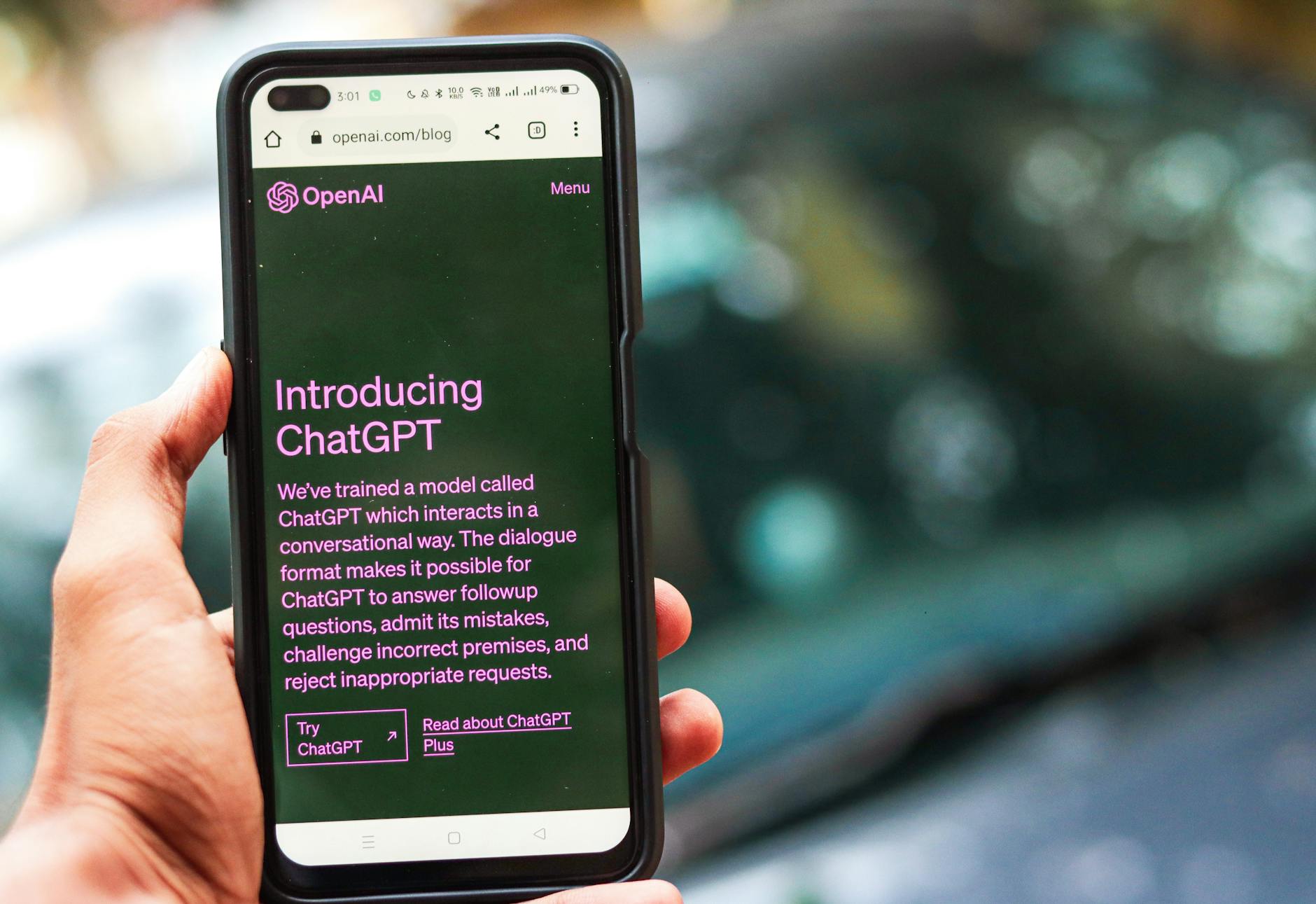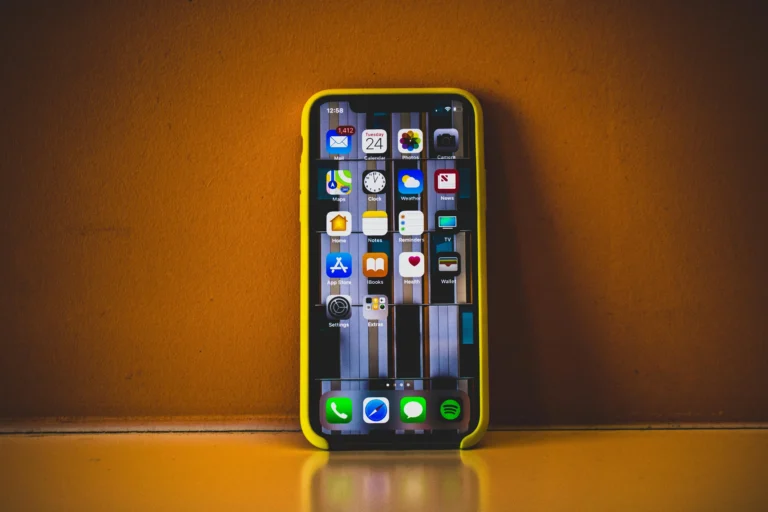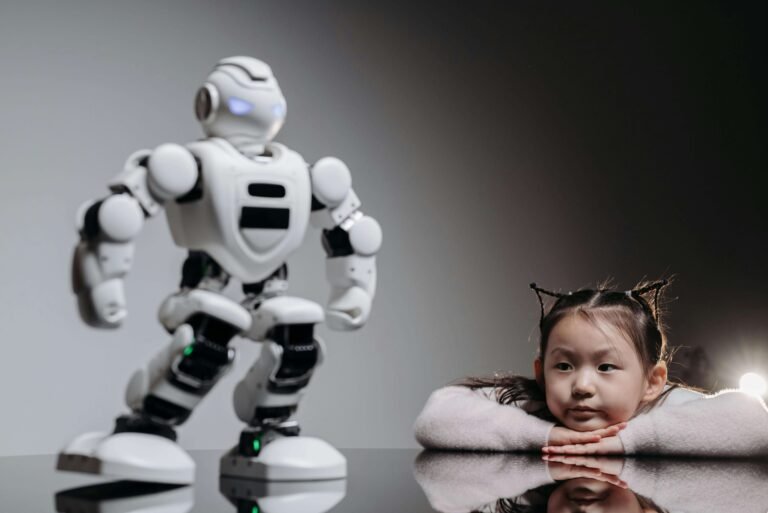Where AI Is Going Next: The Future of AI
Your car finds the safest route on its own. Your doctor spots a risk early because an AI flagged a tiny pattern in your scan. Your phone drafts your email, books your visit, and dims the lights before bed. This isn’t far off, it’s the daily rhythm the future of AI in 2025 is pushing toward.
So where is AI going? It’s moving closer to you, into tools you already use, making tasks faster, safer, and more personal. Smarter assistants will juggle chores and calendars. Smaller, sharper models will handle focused jobs while bigger systems tackle complex writing, code, and math.
This matters because it touches health, money, time, and trust. Parents will see custom learning for their kids. Shoppers will get better service with less hassle. Patients will benefit from earlier detection and more precise care. Workers will offload busywork and focus on the parts that need a human mind.
Here’s what we’ll cover next, with plain talk and clear steps. First, the key advances that make AI feel helpful, not heavy. Then, how AI fits into home life, travel, and learning. After that, what shifts in jobs and business you should expect, from new roles to faster product cycles. Finally, how to keep it safe, with guardrails for privacy, bias, and security.
By the end, you’ll know what to watch, what to try, and what to ask for. Most of all, you’ll see how to turn this tech into everyday value, on your terms.
Smarter AI Systems: From Tools to True Helpers
 Photo by Sanket Mishra
Photo by Sanket Mishra
AI is shifting from passive tools to active helpers that plan, reason, and get work done. Think of a smart coworker inside your apps. It can draft emails, suggest next steps, and run tasks in the background. Faster, specialized models and new chips push this forward, so assistants can plan a family trip, help a teacher grade papers, and summarize long reports without stalling or hand-holding.
Agentic AI: Your New Virtual Coworker
Agentic AI acts with initiative. It breaks big goals into small steps, then executes. It can manage inboxes, book meetings, chase files, compare vendors, or even code simple apps and fix bugs. Systems can loop through tasks, check results, and try again if needed. For context, see this clear primer on agentic systems in 2025: What Is Agentic AI?.
Picture a busy parent at 5 p.m. The assistant checks the pantry, picks a 20-minute recipe, orders a missing ingredient for pickup, schedules a homework block, prints a math worksheet, and sets a 7 p.m. reminder for reading time. The parent cooks, chats, and signs a form before bedtime. Work shifts from routine clicks to human choices. This boosts output and morale without erasing jobs. People guide goals and standards, while the AI handles the drudge work.
Steps Toward AGI: When AI Matches Human Smarts
AGI means an AI that can learn and perform any task a human can. We are not there. But 2025 brings progress in step-by-step reasoning, tool use, and memory. Models can plan longer tasks, explain their logic, and run software tools for math, code, or data checks.
What could that unlock? AI that proposes new drug targets, designs trials, and spots side effects early. AI that models climate fixes across grids, crops, and costs. Real wins arrive when systems reason, test, and verify their work. Challenges remain. Training needs lots of data, power, and careful safety checks. Bias, privacy, and reliability still matter. The path ahead is steady, not sudden, yet the payoff is clear: more time saved, more ideas tried, more problems solved.
AI in Everyday Life: Making Things Easier and Safer
AI is moving into places you touch every day. It rides with your family, keeps your home calm, and supports your doctor and your kid’s teacher. The gains feel simple on the surface, yet they add up to time saved, safer trips, and better care.
Self-Driving Cars and Smart Homes
Robotaxis are not a demo anymore. Waymo runs rider-only trips in several cities, with reports putting weekly rides near 250,000 in April 2025, a sharp sign of real use at scale. See this overview of progress and adoption: Waymo’s Robotaxi Program: Progress and Potential.
Picture a Saturday: you hop in a quiet robotaxi, no small talk, just a smooth ride. Back home, your lights shift to a warm glow at sunset. The door locks after the last kid walks in, and the thermostat nudges cooler for sleep. A home hub checks the fridge, adds milk to the grocery list, and lines up a delivery window you already like.
Safety improves too. Better sensors, like lidar and radar in cars, watch blind spots and crosswalks. Smart cameras and motion sensors at home spot people, pets, and packages, then alert you only when it matters.
AI in Health and Education
Doctors now lean on FDA-cleared AI to read scans fast and flag early signs of stroke, lung issues, or diabetic eye disease. A clinic can catch trouble in minutes, not hours, which means quicker care when every second counts. Imagine a doctor glancing at an AI ping, confirming the finding, and starting treatment right away.
Classrooms get the same kind of boost. Adaptive tools adjust lessons to how each student learns. A child who reads slowly gets shorter passages and instant feedback. A teen strong in algebra jumps ahead without waiting for the rest of the class.
This also widens access. Small clinics can use AI readers even without specialists on site. Rural schools can bring high-quality practice to every student. That is how AI turns into everyday help, not extra hassle.
How AI Will Shake Up Jobs and Businesses
 Photo by Solen Feyissa
Photo by Solen Feyissa
AI is turning data into faster choices and better products. Companies that use it well spot trends early, fix bottlenecks, and ship updates faster. Reports point to AI as a clear growth driver in 2025, with leaders outpacing peers through smarter analytics and automation. For a broad view of where leaders are placing bets, see PwC’s outlook on business AI in 2025: 2025 AI Business Predictions.
Winners in Key Industries
Banks gain speed and security. Fraud models flag suspicious card activity in seconds, cutting losses and reducing false alarms. Credit teams score small business loans with richer data, which expands access while holding risk in check.
Retailers run leaner stores. Demand forecasts shape orders by neighborhood, so the right sizes and colors hit shelves. Smart pricing reacts to local events, not just averages. A grocer that ties models to weather and holidays can cut waste and lift margins the same week.
Healthcare moves from reactive to predictive. Imaging tools help radiologists catch early signs of stroke or cancer. Triage bots route messages, refill meds, and surface urgent cases to clinicians. Clinics use outcome data to tailor care plans, which raises quality and lowers readmissions.
Across these fields, the pattern is clear: better data in, clearer signals out, faster action. That is where real gains stack up.
Job Changes: What to Expect and How to Prepare
Routine work will shrink. Copy-paste tasks, simple reporting, and basic ticket routing fade as assistants take them on. At the same time, roles that mix judgment, taste, and domain skill grow. Think product design, data storytelling, human-centered operations, and AI oversight.
The smart move is AI teamwork. Learn to brief a model, check its output, and stitch results into your workflow. A customer support rep who builds quick AI replies, then adds empathy and policy, handles more cases with higher satisfaction. A marketer who pairs insights with creative ideas ships better campaigns.
Many workers are already adapting and winning. Teams that add prompts, templates, and review checklists report shorter cycles and fewer errors. For a data-backed view of job shifts and growth, see J.P. Morgan’s research on AI and work: AI’s Impact on Job Growth.
You do not need to code. You need clear goals, sharp prompts, and steady judgment.
Keeping AI Safe: Ethics and Watch-Outs Ahead
 Photo by cottonbro studio
Photo by cottonbro studio
AI will help more in 2025, and safety must keep pace. Fair data, clear rules, and strong oversight set the tone for trust.
Fighting Bias and Building Trust
Bias shows up when a model learns from skewed data, or uses a proxy for sensitive traits. Hiring tools can favor certain schools. Medical models can miss signals in underrepresented groups. The fix starts with diverse data, balanced labels, and constant audits.
Real progress comes from checks before and after launch. Teams run bias tests on subgroups, compare outcomes, and retrain when gaps appear. They publish model cards and plain-language summaries so people know limits. Hospitals and labs now share clear methods to reduce bias, as seen in this review of bias mitigation in healthcare AI: Bias recognition and mitigation strategies in artificial intelligence. Broader surveys show tactics that generalize beyond health, including reweighting data and fairness constraints: Systematic review on bias mitigation in generative AI.
Simple tips you can use:
- Ask vendors for subgroup results and update cadence.
- Prefer tools with explanations and clear failure cases.
- Pilot with a diverse user group, then monitor outcomes monthly.
- Keep a human review step for high-stakes calls.
Risks and How to Handle Them
The list is clear: privacy breaches, model mistakes, wild agent actions, misinformation, and job loss pressure. Poor data leads to poor calls. Over-automation can hide errors until they hurt people.
In 2025, strong safeguards matter. Use privacy by design with minimal data, short retention, and encryption. Add access controls, audit trails, and safe sandboxes for agents. Run red team tests before rollout, then monitor drift in production. Set kill switches for tools that act on your behalf. Keep a human in the loop for health, finance, hiring, and safety.
Practical steps:
- Map sensitive data, then strip or tokenize it.
- Limit agents to allowed tools and time windows.
- Write clear escalation rules and ownership for reviews.
- Train teams on prompts, bias checks, and incident reporting.
Governments and companies are pushing for transparent, accountable AI. Pair those rules with your own steady oversight, and trust grows as the system proves itself. Shared responsibility keeps AI helpful, fair, and safe.
Conclusion
AI’s future in 2025 looks practical, personal, and closer to home. Smarter systems plan tasks, check their own work, and hand you clear choices. Everyday life gets lighter, from safer rides to early health flags to custom lessons. Work gets sharper as assistants cut routine steps and lift quality. The gains stack up when teams add guardrails, track outcomes, and keep a human in the loop.
Hold on to the simple promise that opened this guide, a calmer day where tools fade into the background and results speak. That is smart growth, not hype, built on better reasoning, clear data, and steady oversight.
Take a next step today. Learn basic AI skills, write cleaner prompts, and test one small workflow. If you lead a team, run a short pilot with clear metrics and a review checklist. If you are a parent or student, try a trusted tutor app and set usage rules.
Thank you for reading. Share your thoughts, wins, and worries. What part of this future do you want to build next? Stay tuned for updates, guides, and simple playbooks as AI’s future in 2025 keeps unfolding.







